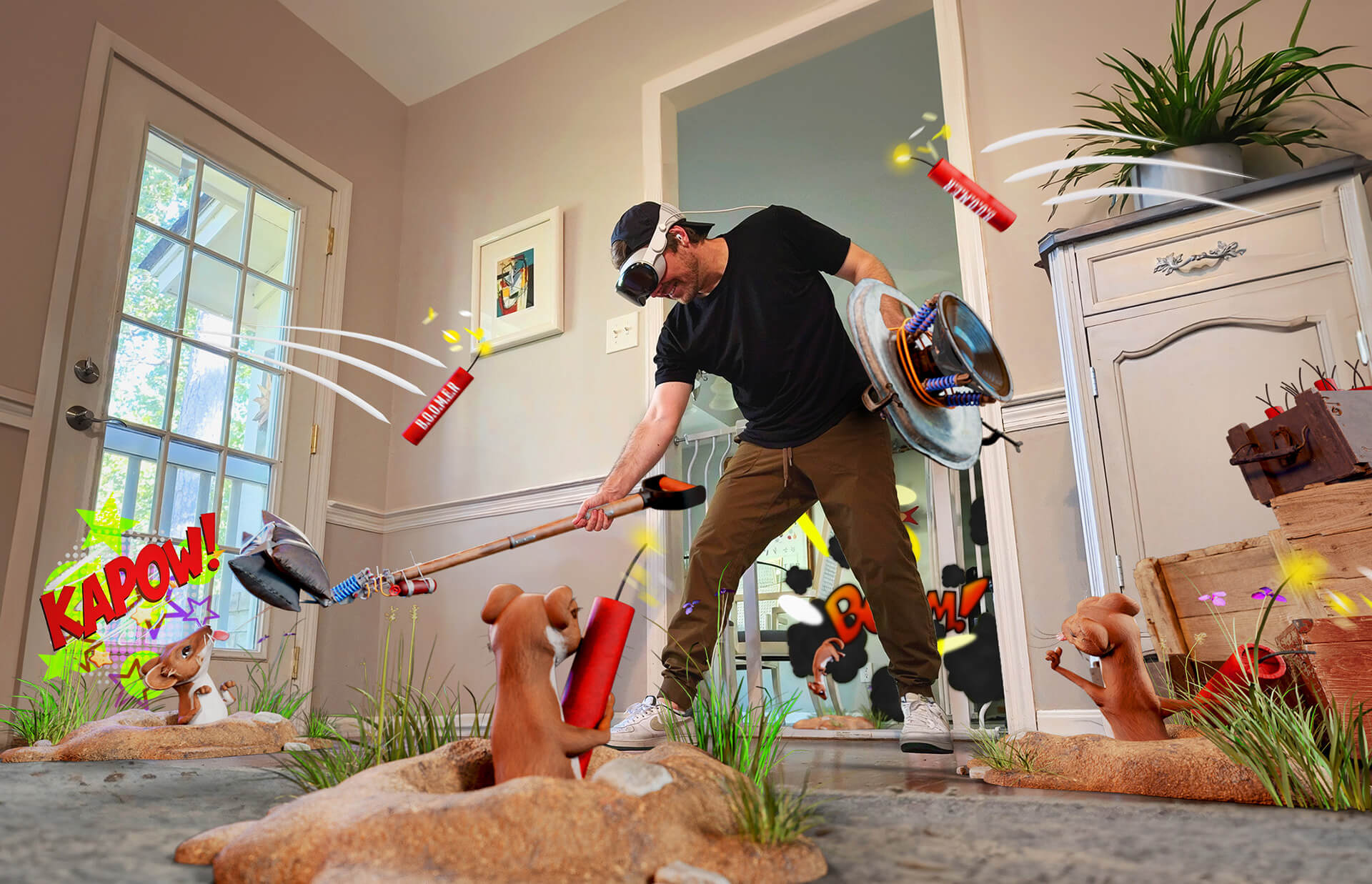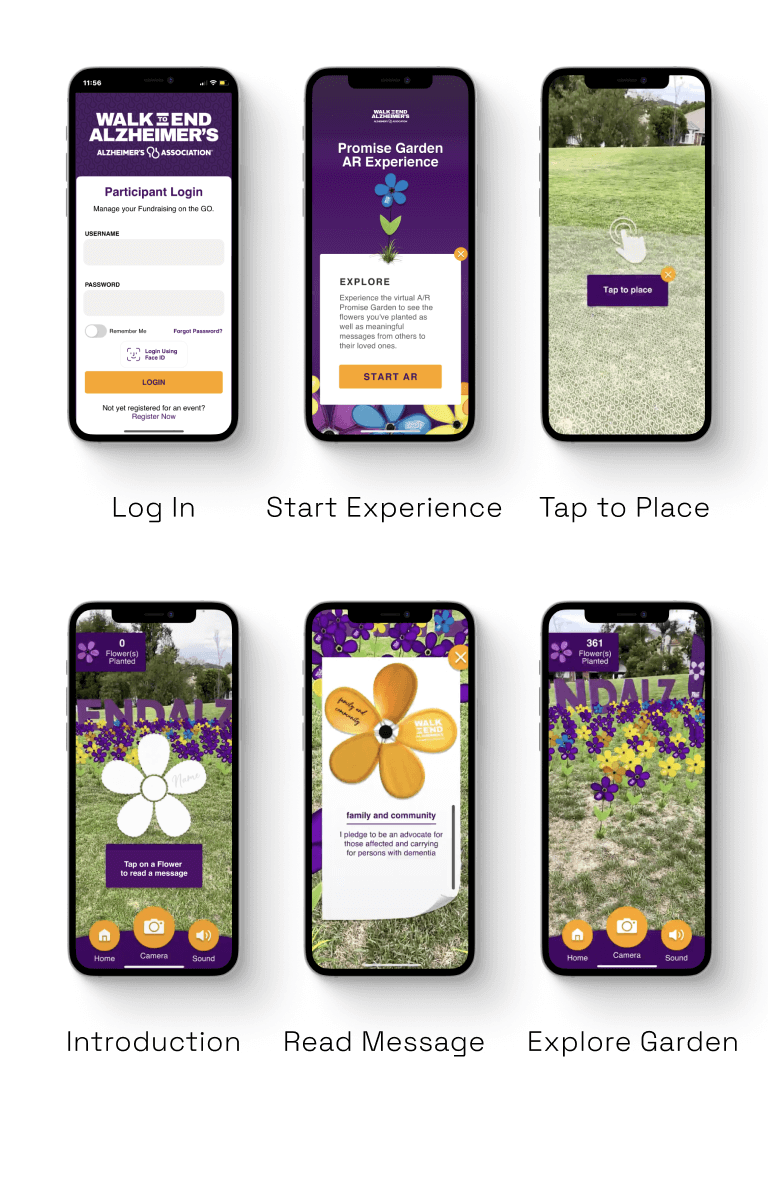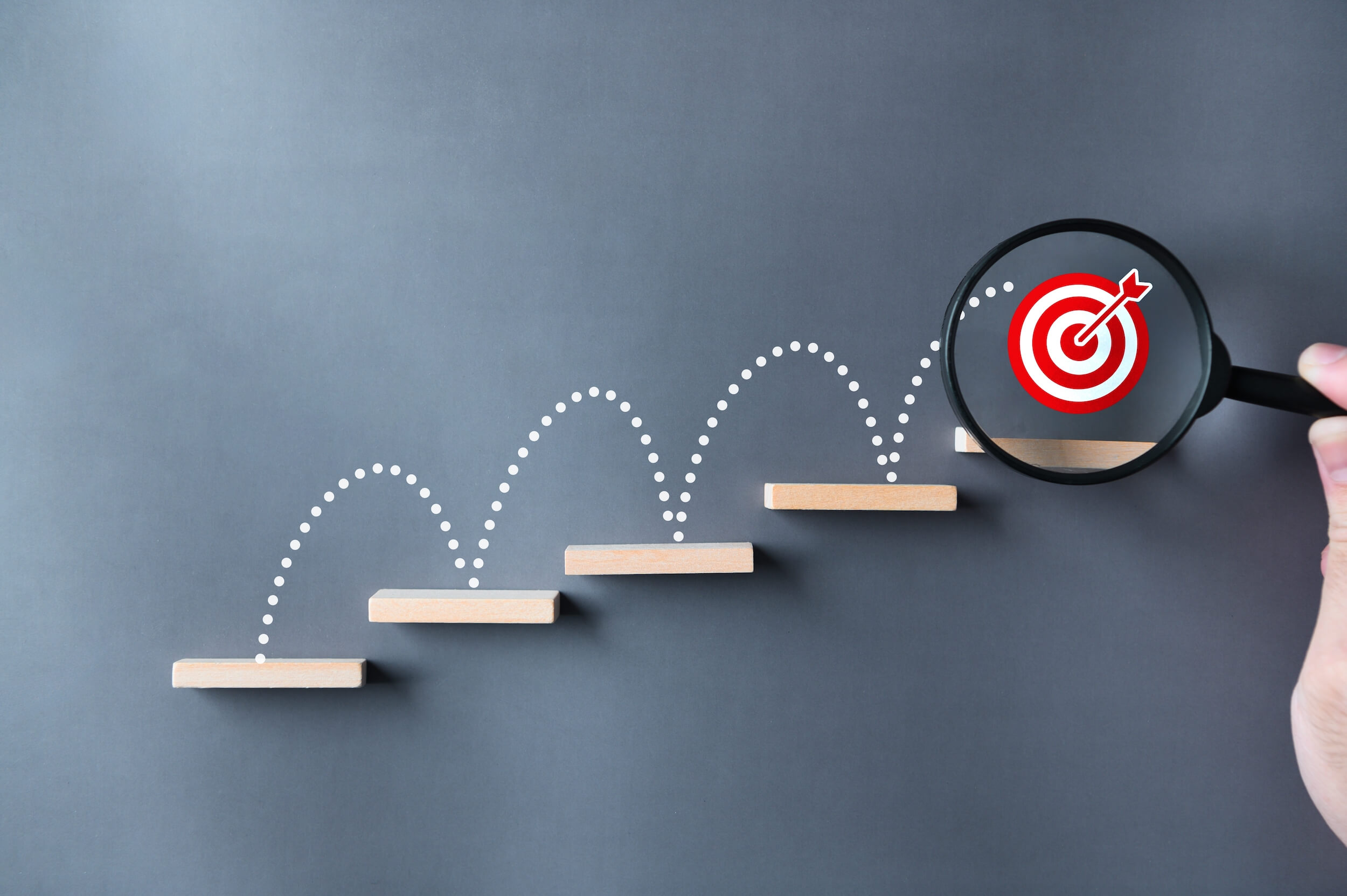
Credit: Rock Paper Reality
Around 80% of marketers use event marketing to generate sales leads, yet 40% say their biggest challenge is attracting new attendees and about 20% desire greater technology to support their efforts. Clearly, alternative approaches to traditional event formats are necessary and Augmented Reality can open up an entirely new world of possibilities.
By using Augmented Reality for events, brand and marketing managers, event planners and experiential agencies can make experiences more engaging, reduce costs and collect invaluable. first-party insights about their audiences. In particular, it is a magnet for younger demographics, with 60% of Millennials and 53% Gen Z members say they prefer events that contain an experiential element.
Just under half of marketers believe that in-person events already offer the largest ROI. However, AR has the potential to push this even higher and redefine what brand storytelling means to the customer.
Key Takeaways
- Younger demographics are extremely challenging to reach and captivate. AR is a way for marketers to offer a far more engaging and personalized experience.
- AR experiences can lead to higher ROI and more excitement around a brand. They also generate great content that can be shared on social media or within a community.
- AR creates opportunities for collecting data on user behavior and preferences. This is more important than ever given Google’s phasing out of third-party cookies in the second half of 2024.
- Once created, marketers can use the AR experience across multiple events or marketing opportunities. There’s less or no need for the transport of physical materials.
What is Augmented Reality for Events?
Augmented Reality is the overlaying of the physical event itself with digital content, viewed through a smartphone or headworn device such as AR glasses. It can also take the form of interactive displays and digital kiosks on-site and offers a more immersive way to attract, engage and educate potential leads.
Here are just a few types of events that could benefit from incorporating AR:
- Trade shows
- Promotional events
- Product launches and demonstrations
- Live events
- Concerts and festivals
- Presentations
- Corporate and networking events
With 67% of consumers saying they’d be interested in using it at an event but just 48% of brands interested in delivering the experience, there’s clearly a huge opportunity ready to be seized. When used effectively, AR can create an immersive experience to enhance almost any sort of event. This can massively boost engagement and prospect understanding.
Let’s chat
Not sure where to start? Book a free strategy call with us to get started! No strings attached.

How Can AR be Used at Events?
Augmented Reality is a great and versatile technology, but it’s vital to use it in the right way. Here are some of the most effective ways to deploy immersive experiences at events.
Using Interactive Maps and AR Navigation Tools at Events
Navigating a large convention can be difficult and time consuming. Often attendees spend less time in-front of a product and more time walking around or lost. Offering innovative navigation tools not only makes things easier for them, but also enables companies to direct visitors’ attention.
AR Product Demonstrations at Events
AR is ideal for showing products in action and for demoing proof of concept prototypes in an accessible way. It gives brands the opportunity to demonstrate the value proposition of their product or service directly.
According to a Global Report by Snap x Ipsos, interacting with a product in AR leads to a 94% higher conversion rate compared to traditional interactions. Additionally, 77% of users would like to use AR to interact and learn about a product before buying it. With only 56% of brands currently offering these experiences, commercial directors have an opportunity to differentiate their brands competitively.
Just one example is Rock Paper Reality’s collaboration with Rondo. The two companies worked together to create an AR visualization tool which allowed people to see inside Rondo’s heat battery. Prior to the tool’s creation, all visitors could see was a large metal box— not exactly an engaging or educational experience. The solution brought to life a space that had previously been impossible to view. It also enabled Rondo to explain how the battery works to people at press events, training sessions and more.
AR Showrooms at Events
Using an AR showroom, companies can create a branded experience and enable the customer to visualize a product before purchase. Data from Shopify suggests that including AR in a customer’s path to purchase increases sales conversions by 94%. Another study also found that shoppers who used AR in their browsing experience spent 21% more time browsing and had a 20% higher purchase rate. AR showrooms can be updated easily and virtual product demos make for great content to use in marketing.
Using AR to Enhance Inclusivity and Accessibility at Events
Using AR at an event allows for real time language translation, more personalized experiences and improved opportunities to build a community around a brand or product. It can also bring people into an event who would otherwise not have been able to attend. For example, the Alzheimer’s Association wanted to improve the inclusivity of its USA-based Walk to End Alzheimer’s fundraiser. To do this, it created an AR Promise Garden Experience that allowed users from any location to participate and donate money.

What are the benefits of using AR at an Event?
Using AR at an event, whether it be an AR trade show or an AR product launch, can increase engagement, elevate connections with the customer and improve ROI for the brand. Let’s take a deeper look at some of the greatest advantages.
Use AR to Improve Audience Engagement
Perhaps one of the best ways to improve audience engagement is through gamified experiences. Gamification has been shown to boost audience engagement and loyalty by an average of 30%, and given AR’s incredibly immersive capabilities, adding gamification to an AR experience would likely boost engagement even more.
The Mikhail Chekhov Riga Russian Theatre created an AR scavenger hunt to celebrate the world-famous Russian entertainer. The AR-powered event offered adventurers a guided tour through ten sites related to Chekhov’s time in Latvia. Users could QR codes near special objects, launching AR displays and information.
“We realized that augmented reality would be the best way to safely and interactively unravel [Chekhov’s] story. People do not need an excursion guide. They can explore the track independently” – Anna Babre, PR Account Director at Ogilvy PR Latvia.
Streamline Information Delivery
AR offers a plethora of options for highly personalized experiences and options for educating the customer. 71% of consumers expect companies to deliver personalized interactions today and 76% are frustrated when they’re not offered. This gap between consumer expectations and brand offerings is an opportunity for businesses to leverage AR for deeper engagement and better consumer education.
AR also creates an excellent opportunity for paperless information dissemination at any kind of event. Attendees can simply access the activation using a personal device and custom-made app or QR code and receive all relevant details from directions and wayfinding to time schedules.
Audience Insights and Analytics
88% of marketers say that first-party data is becoming increasingly important to them. Its significance will continue to rise as cookies are phased out in 2024. Using AR at an event, marketers can obtain a whole host of first-party data about the consumer. Everything from user preferences to the time spent looking at an ad can be collected and used to fine-tune the virtual content for future brand touchpoints.
Cost Efficiency and ROI
Incorporating AR into the event experience can reduce or even eliminate the need to show a physical product at all. There’s no need to print posters or infographics as displays can be virtual. Digital content can be repurposed across multiple events and channels across the world.
AR-based experiences also eliminate the need for transporting, storing and building physical displays. The time and money that was previously spent on this can instead be invested into new initiatives or the business itself.
How to Measure the Impact of AR Activations at Events

Measuring the impact of an AR activation at an event is critical. It enables commercial directors to review its efficiency and to better understand how to use it in the future. Here are some key metrics to consider:
- Interaction duration
- Content consumption rates
- CTA completions
- Attendee engagement metrics (scans, clicks, views)
- Impact on brand awareness (recall, sentiment, mentions, social media engagement post-event)
- Heat-maps of interactions at different locations
- Leads and sales generated
- Customer satisfaction and surveys of the experience
The data collected should show how well the objectives of the event were met and the impact of utilizing Augmented Reality specifically.
Keep up to date
Sign up to our newsletter for exclusive updates and content, delivered directly to your inbox.
How to Implement AR at an Event
AR can open up extremely high levels of immersion, so care must be taken to delight rather than overwhelm users. An experience should feel like a natural extension of a user’s physical environment and keep them engaged. It should not be so intense that users feel bombarded and confused.
How to Design an AR Experience for an Event
It’s important to design the AR experience to be as accessible as possible. Making it easy to use and understand enables more people to take part and more leads to be generated. Ideally, it should require no prior AR experience and be as intuitive as possible.
Sound can also play a big role in the experience and influence user interactions. Brands could consider incorporating features that facilitate easy sharing of screenshots or video captures too. This makes for great content that both users and marketing teams can distribute on social media.
Educating attendees about accessing the AR content
Accessing AR content at an event can be simple. Users will typically scan an AR code (a QR code to start an AR experience), directing them to a browser (WebAR) or native AR app. Communication prior to the event, whether it be through newsletters or social media, can also provide attendees with instructions on how they can access the experience once they arrive.
What are Examples of AR for Events?
Countless brands have successfully used AR experiences to boost engagement and educate or entertain prospects at events. Here are just three examples.
AR Gamification with Rock Paper Reality and Amazon
In 2023, Amazon Prime Video partnered with Rock Paper Reality to create an immersive gamified AR experience and generate excitement about the Emmy Awards. After digesting the brief, RPR conducted market research on the end users and then ensured the branding and copy matched the requirements of Amazon Studios.
RPR then designed the experience to incorporate elements of gamification and align with Amazon’s goals for the event. In the experience itself, users could find and scan QR codes around the exhibit to unlock details about physical sets on display, encouraging them to engage and move around the space.
The experience was used by 70% of guests and generated conversation and connection between them. It also helped control the flow of traffic around the venue and improved upon previous event experiences which had relied on placards.
London Fashion Week’s AR Makeover
The Institute of Digital Fashion and Machine A partnered in 2021 to create digital spaces for brands to tell their stories and deploy AR activations in. The creation of custom AR filters allowed users who couldn’t attend the event to be part of the experience, which gave some of the world’s most creative designers a space to showcase their work in an innovative and engaging way.
“Digital fashion is not about trying to imitate the feeling of the IRL fashion world. It is about exploring a vast number of creative possibilities that are unique; encouraging new ways of engaging with the industry and how we can create a community that is much more inclusive.” – Stavros Karelis, founder of Machine-A.
Navigation with AR and Google
Google’s AR experience at the Las Vegas Consumer Electronics Show in 2024 utilized location-based content to help users navigate its booth at the convention. Many people found the addition of AR to the experience useful and engaging. Interactive panels were overlaid around the booth in the experience so attendees could easily orientate themselves and decide which parts they wanted to visit. They also used the famous Android robot to act as a friendly guide throughout the experience.
“Location-based AR experiences can transform event experiences for attendees who desire more ways to discover and engage with exhibitors at events…. AR content can offer a more immersive and personalized experience that not only entertains but also educates and connects attendees in meaningful ways.” – Google
Challenges and Considerations for deploying AR Experiences at Events
Although AR technology can be extremely engaging, there are important considerations to have in mind when integrating it at an event.
Optimizing AR performance in crowded event environments
The area the experience takes places in should have excellent Wi-Fi or 5G connectivity to support seamless performance. The space itself must also be free of any obstacles that could potentially harm attendees while they are focusing on the digital experience. Supplying clear user guidelines is paramount.
Safeguarding attendee data and privacy during AR interactions
Safeguarding any user data collected via an AR experience comes with its own challenges and best practices. Make it clear to the user what data is being collected and ensure the data collection process complies with any regulations for the region.
Future Trends and Opportunities for AR at Events
As the improvement in AR technology continues, so will the opportunities for using it as an event marketing and brand storytelling tool. The number of AR compatible devices is set to grow from 1 billion in 2023 to 1.5 billion by 2027 — 50% growth in just four years. The customer base is growing staggeringly fast and this will of course help AR to drive improved lead generation and consumer spending at events over the next decade.
Improvements in AI will likely have a huge impact on the AR space too. Using AI to generate a personalized AR avatar and then having it interact with the customer face to face at an event could create a massively more engaging and improved experience. As big tech companies continue to invest into immersive technology and the metaverse, growth in AR capabilities is a certainty.
At Rock Paper Reality, we specialize in creating customized AR experiences designed not only to be incredibly engaging, but to deliver real business results. Our approach goes beyond the surface level and sets a new benchmark for engaging audiences. We’re excited to work with you to craft your unique AR story and lead the way in transforming the event experience. Connect with us today to begin your journey.
FAQs on AR for Events
How can AR promote audience engagement for an exhibition?
AR creates more opportunities for personalization, gamification, virtual guided tours and more. All of these can help improve audience engagement and the exhibition experience itself.
What types of AR content are most effective for engaging event attendees?
Interactive and personalized content is highly effective at engaging event attendees, especially those which encourage exploration and participation. AR features that allow for social interaction such as filters or virtual meetups within an event space also create a sense of community and boost engagement even more.
What are some best practices for promoting AR experiences to attendees before, during, and after an event?
Leveraging social media and email campaigns before the event to entice prospects to attend and create a sense of anticipation can help boost attendance. During and after the event, brands should encourage attendees to share AR content on social media and gather feedback to refine and optimize future activations.
What is Augmented Reality for events?
AR is a technology that enhances events by overlaying digital information onto the physical space, creating interactive and immersive experiences for attendees. It can transform ordinary event spaces into dynamic and immersive environments and offers unique ways for participants to connect with content, brands and each other.
